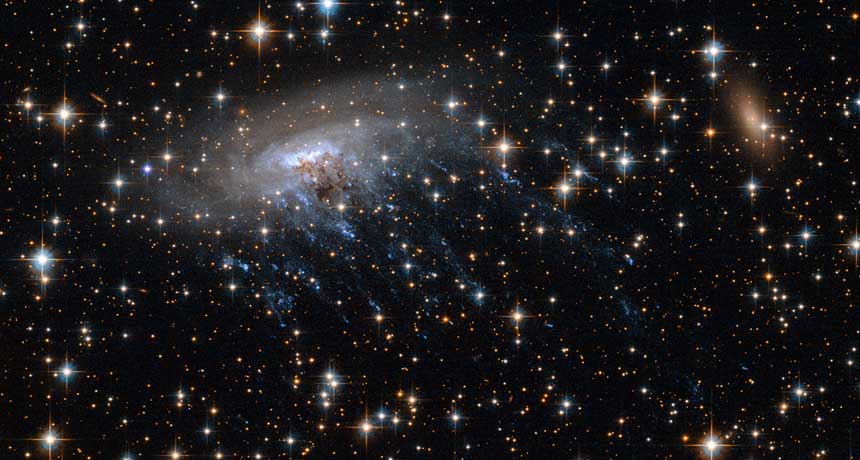Galaxy drags trail of newborn stars
Hubble Space Telescope spots trails of baby stars

The galaxy, 200 million light-years away, leaves trails (shown in blue) of gas and newborn stars as it plows through the Norma cluster of galaxies. Bright stars in the foreground sit within our Milky Way.
Ming Sun/UAH, Serge Meunier, NASA, ESA







